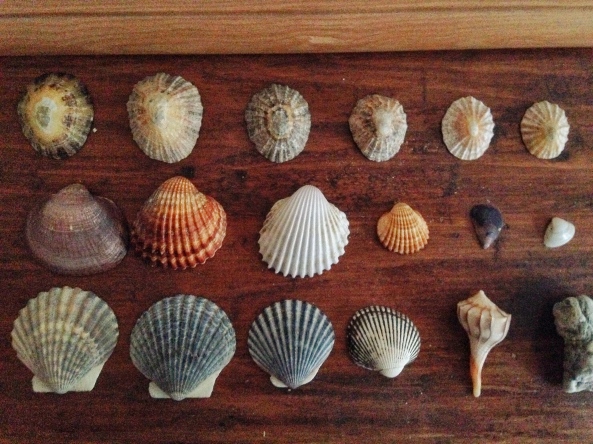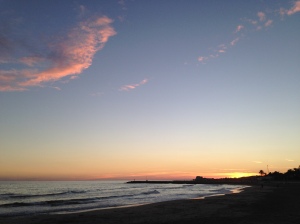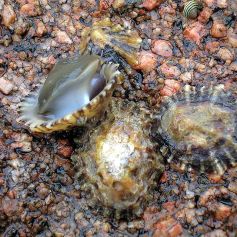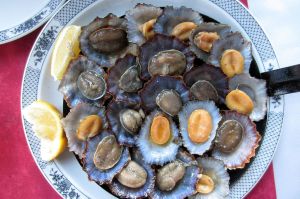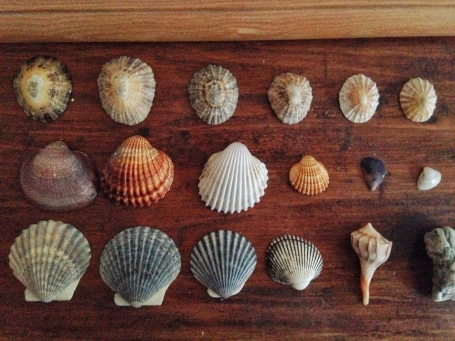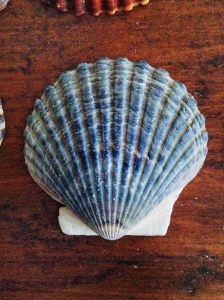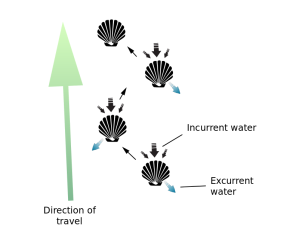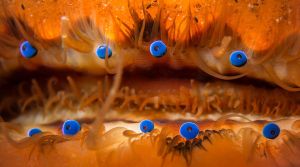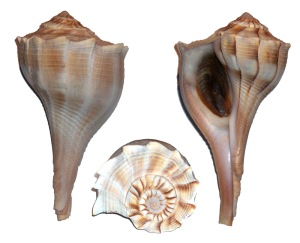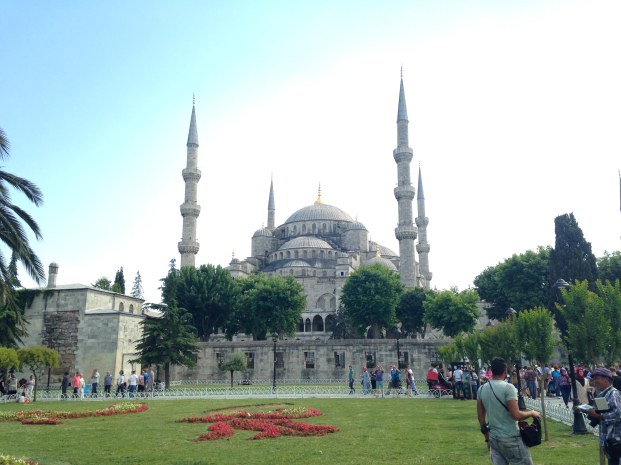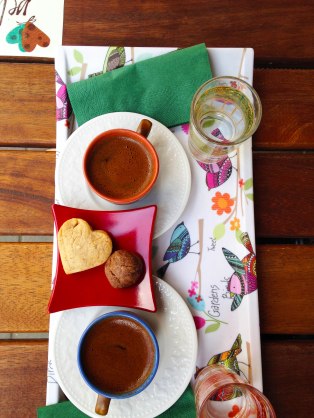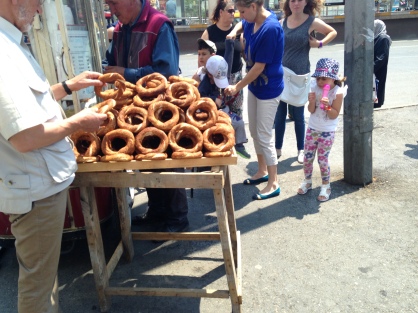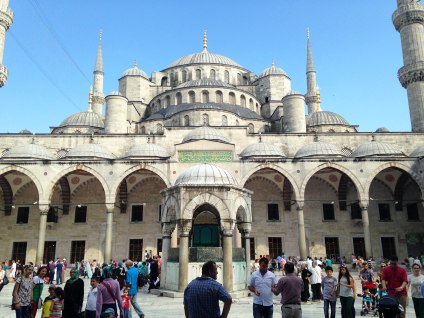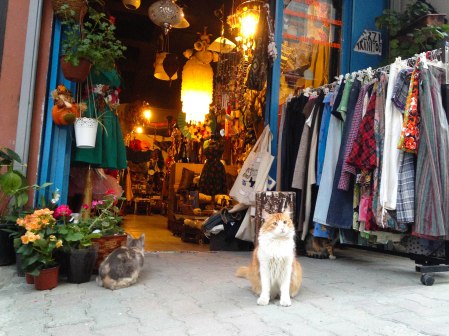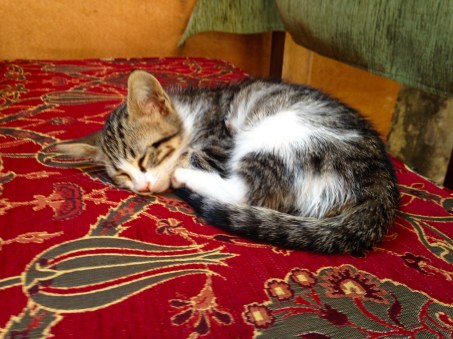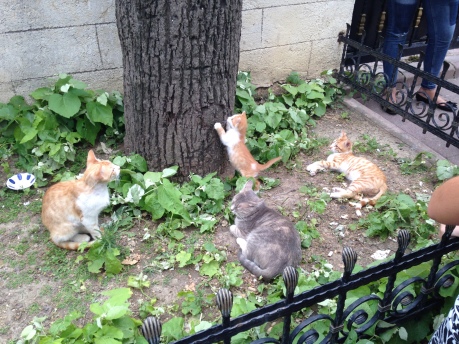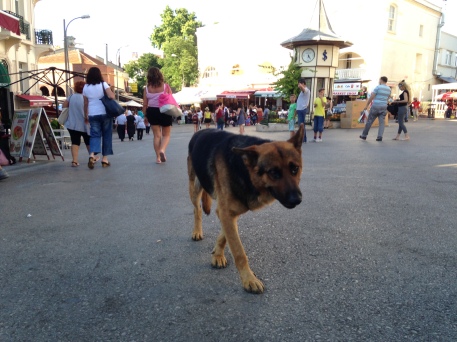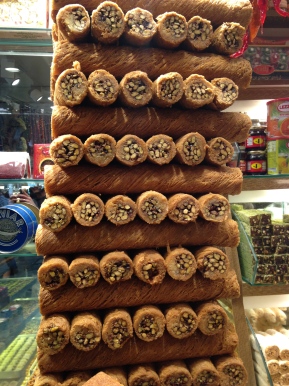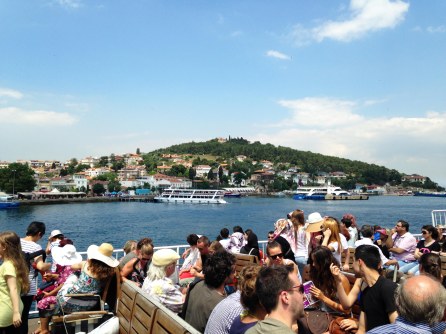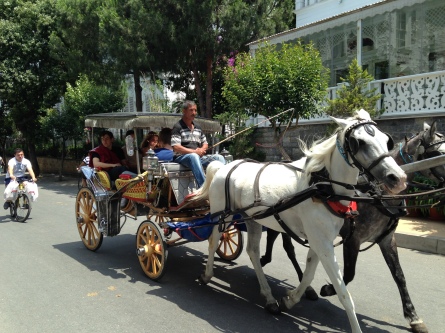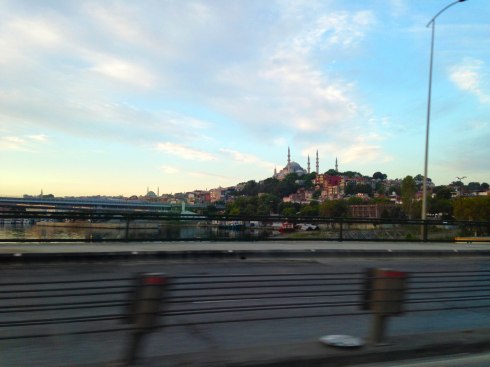I’ve always loved walking along the beach collecting shells, and just for the thrill of it I decided to identify these shells from three different beaches I’ve visited recently. I was struck by the differences and just wondered what the animals these shells came from looked like. The top row is from Portobello beach in Edinburgh, Scotland, the second row is from Sitges, Spain, and the bottom row is from Cape Cod, Massachusetts.
Most of them appear to be bivalves, which are sedentary animals that extend their siphons up to the surface of the sand for feeding and respiration during high tide, and then when the tide goes out they use their muscular “foot” to burrow into the sand in the intertidal zone. By hiding in the sand on shore they are protected from predators and dessication. So when you’re walking on a beach there are likely millions of these guys living below your feet!
Another strategy that some bivalves use (such as mussels and the common limpet) is to cement themselves to a hard surface or another shell permanently. These bivalves are more exposed to animals like lightning whelks, who drill through their shell, extend their proboscus and suck out their prey!
The top row from Edinburgh turned out to be Patella vulgata, or the “common limpet”, a common edible european sea snail. Apparently they grow on rocks and you can pry them off with a knife, and are supposedly delicious with butter and black pepper.
I believe the three shells in the very middle of the photo (from Spain) are Cerastoderma edule or the “common cockle”, which is found commonly on European beaches. These are the ones that burrow down into the sand below your feet. This species is also eaten widely and even farmed commercially in the UK.
Back in the neolithic age (6000 B.C.) primitive humans used these shells to create pottery decorations, the raised lines of the shell causing imprints on the clay. This type of pottery is known as “Cardial” because the old latin name for Cerastoderma edule was Cardium edulis.
The three shells in the bottom left of the photo (from Cape Cod) appear to be in the family Pectinidae, which are also known as scallops. These guys don’t have a siphon like other bivalves, and actually catch plankton in their mouths. They have 100 bright blue eyes all around the edge of their shells that can distinguish from light and dark, and they can actually swim in short bursts by shooting water through their shells!
I believe the bottom right, spiraled shell (another from Cape Cod) is a Lightning Whelk (Busycon perversum) which is by far the coolest name. These are the predator sea snails mentioned earlier that extend their proboscis into the bivalves and suck them out like soup! The lightning whelk is so named because it’s the fastest draw’ in the west. Their sinistral (left) spiral was thought to be sacred by the Native Americans and it’s pretty unique to North America.
Here’s a video that shows you how big these snails can get, usually up to a foot long!

